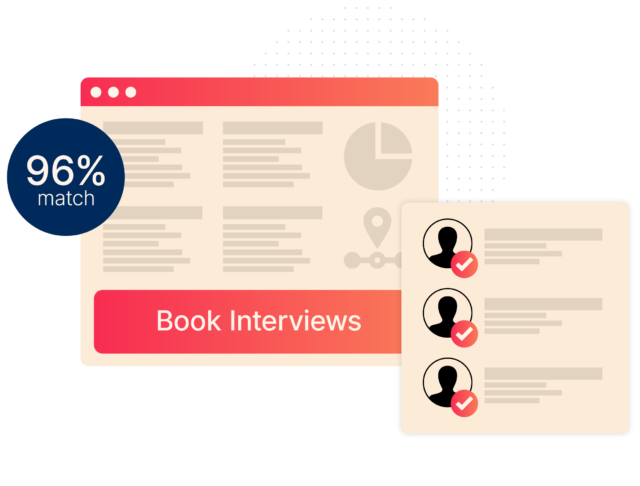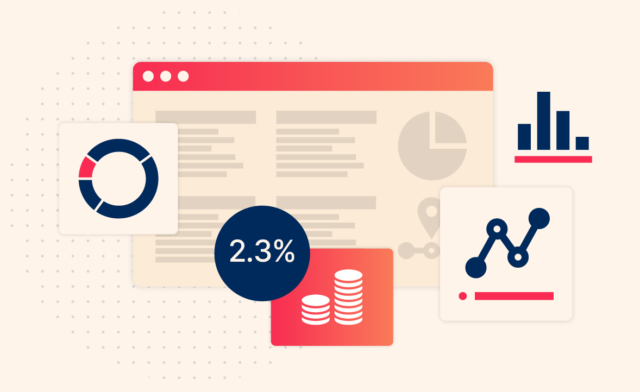How to Build, Manage, and Grasp a Candidate Database For Talent Acquisition in 2025

A candidate database is the perfect solution for touching base with high-volume recruitment. It provides a central space for storing, managing, and scanning every applicant that enters your pipeline.
When recruiting is going well, your HR team usually has more applicants to process than they can handle. Sure, a resume screening strategy can narrow the field, but you might miss out on top talent.
How can you best hold onto qualified candidate details for future openings and new job roles? That’s exactly where a candidate database comes in.
In this clear guide, we explain what a candidate database for recruiters can do for your organization. Let’s begin.
What Is a Candidate Database?
A candidate database is a digital repository where you store and manage information on job candidates. It allows you to edit, update, and delete records as needed.
Candidate profiles highlight vital details such as education, work experience, and contact details. Applicant strengths and weaknesses may also be included. HR professionals can access the database to find information about any type of candidate in the system
What is recruiting candidate database software?
Candidate Database Software simplifies the tracking of every job applicant. Most solutions are a Candidate Management System (CMS) or Applicant Tracking System (ATS).
Each candidate has a unique identifier, and all of their up-to-date information is available to pull at any time. Applicant details are monitored and updated as candidates progress through the hiring pipeline.
Why Is Creating a Candidate Database Important?
It is challenging to stay organized when dealing with large amounts of data. This is why your IT team uses solutions like data warehousing and data lakes. Likewise, a candidate database helps your hiring team handle a high volume of applicant information.
A candidate database boosts the efficiency of your operation and effectively manages your Reserve List Of Qualified Candidates. Database software keeps up with technological advances in other business areas, including AI, machine learning (ML), and automation.
What Are the Benefits of a Candidate Database?
Creating your candidate database will take some effort but it’s the benefits far outweigh the costs. Here are some of the advantages for your business:
Organize and centralize candidate information
Solutions like an ATS give you a central hub for managing your candidates. From the cloud, your team can access any applicant profile at any time. Profiles update in real-time, ensuring your team has the most accurate information.
Better retargeting of past applicants
A resume or CV database means you can access “runner-up” candidates from past openings and other well-qualified people. Your recruitment team can begin early outreach with these top candidates, who might prove to be the best fit this time around.
Easy resume parsing
An organized candidate database streamlines processes like resume screening and applicant segmentation. Keyword searches and filters help your team find the right candidates to move forward.
With ATS Software like Oleeo, you can automate screening. Automatic resume screenings save time and eliminate unconscious bias from your recruitment efforts.
Saves time
Having your applicant tracking in one place means everything gets done quickly. Candidates are notified right away about interviews, assessments, and offers. Automation speeds up resume screening, background checks, and other manual processes, and you also reduce time-to-hire while finding the highest-quality candidates.
Saves money
The cost of recruitment includes employer brand marketing, job board fees, and other expenditures. It also includes the productivity costs of vacant positions and onboarding time.
A candidate database management system uses AI and automation to trim the fat and speed up every step of the hiring journey. With a more efficient operation, you lower overhead costs and reduce time-to-hire.
Discover the best talent
Using a candidate management system helps ensure no bias in your hiring pipeline. AI and automation improve diversity, equity, and inclusion (DE&I), helping you find top talent you might have missed otherwise.
Data centralization enables you to analyze vital recruitment metrics and glean actionable insights.
Better candidate experience
A candidate CV database means you don’t lose track of anyone. Either through automated messaging or alerts, your team will always contact each applicant as soon as a decision has been made.
Recruitment software like Oleeo provides Seamless Interview Scheduling for candidates. Your team can easily handle high-volume itineraries, ensuring availability for every applicant.

How to Build a Candidate Database in 6 Easy Steps
Building a candidate database doesn’t happen overnight. Sure, you might have some applicant details on some Excel spreadsheets or Google Docs, but that’s only the tip of the iceberg.
How can you best organize candidate data so you can access it quickly and update it as needed? What tools do you need, and how will they fit your existing business applications?
Follow these six comprehensive steps to build a recruiting candidate database.
1. Search for candidates
You can’t build a database without data. What information do you need for your candidate database, and where do you begin?
Candidate data collection
You can’t start building your CV DB until you have some candidate profiles to create. Everything begins with the recruiting hunt for interested applicants. And your search will only prove fruitful if you gather as much relevant information as possible.
Candidate data enrichment
Logging candidate data is one-half of the equation. You also need to verify and enrich your database records. This is easier said than done, but your life will be much easier if you use an ATS or other candidate database software to automate processes like verification and eliminating duplicates.
You can also use third parties to enrich your talent database. They supply data from professional networks and business sources. This will help you organize and tag candidates for easier parsing later on.
How to identify qualified candidates
Identifying qualified candidates depends on what database tools you use. If it’s just spreadsheets, you’ll be hitting Ctrl +F laboriously while you look for different criteria. Organizations that want rapid candidate screening and selection use an ATS like Oleeo.
A candidate management system uses automated screening to focus your search. Your recruiters can search for keywords and turn on filters to find applicants.
2. Choose database software or platform
As we’ve mentioned repeatedly, your life will be much easier if you opt for candidate database management software. However, the platform you choose depends on the needs and fit of your organization
Options that fit the bill include the following:
-
Applicant tracking system: Purpose-built solutions that monitor candidate progression automatically.
-
Candidate management system: Similar to an ATS, but may focus more on candidate nurturing than evaluation.
-
Candidate relationship management (CRM): Focuses on creating a talent pool and maintaining healthy relationships.
-
Talent Acquisition platform: A comprehensive suite with an ATS, CRM, and other tools.
-
Recruitment marketing tools: Built to increase lead generation but may include candidate tracking.
3. Decide on the fields you want to use
Alright, you’ve got some candidate data and picked out an applicant-tracking solution. Now it’s time to decide what fields to use for each profile. Of course, this comes down to the need for business and each role.
For example, if you’re a software developer, you probably want a field for primary and secondary programming languages.
Most platforms will come with a range of field options for you. You can also create custom fields and tags and align profile fields with the data you’ve been collecting.
4. Organize the information and input the data
Next step is organizing and prioritizing all of that candidate data. Use labels to enhance the segmentation process and add filters like work experience, job role, and qualifications to expedite recruitment.
What types of candidate information should be stored in a database?
Most organizations find that the more information, the better. That said, it’s best to stay within the scope of what you’re looking for.
Record candidate details such as:
-
Full name
-
Contact information
-
LinkedIn Profile and other social media accounts
-
Portfolio website or applicable samples of work
-
Work experience, including job titles and responsibilities
-
Education and training
-
Qualifications and professional certifications or associations
-
Hard and soft skills
-
Fluent languages
-
References
-
Professional summary, including accomplishments and career goals
-
Application information such as date and source
5. Add notes and tags
With notes and tags, you get more granular control of your candidate database. Your team can add notes at any stage of the recruiting process, from receiving an application to interviewing. They will all be searchable and accessible.
Custom tagging can speed up screening and selection by quickly categorizing candidates.
6. Boost your candidate reach using assessment software
Candidate profile data goes a long way to streamline recruitment. However, you can enhance and optimize your recruiting by using applicant assessment software. These tools enable you to build custom skill and personality tests to qualify candidates further. Along with an ATS, it also helps you remove unconscious bias and identify top talent.
How to Manage a Candidate Database
Getting your candidate database up and running is a feat in itself. What happens when applicant information is continually added? Your DB just keeps bloating until it breaks?
Centralizing your candidate information has many benefits. However, maintaining it like a well-oiled machine requires effort.
Here are some tips on how to manage and optimize your candidate databases:
-
Maintain updated information: Schedule regular audits and update old records.
-
Track the status of candidates: Use alerts and dashboards to stay on top of every applicant.
-
Train your team: Work with your provider to source training and onboarding materials.
-
Use the database regularly: Make it a policy for your recruiters to consult with candidate databases daily.
-
Clean up data: Remove candidate profiles with errors, duplicates, and those that have been inactive for a defined period.
How long you keep candidate records depends on your organization and compliance regulations. For example, under the EU’s General Data Protection Regulation (GDPR), you need candidate consent to store information. Also, you can only store information if you intend to contact the candidate within 30 days.
State laws, such as the California Consumer Privacy Act (CCPA), may apply in the US. Solutions like a Recruitment CRM simplify compliance by automating consent forms and data handling.
Generally, you keep candidate data in your CV DB for six to twelve months. You can then reach out to renew interest and retain the data as needed.

How to Create a Candidate Pipeline
Your candidate pipeline is the group of applicants you want to hold onto who may not fit a role yet. However, they might be valuable in the long run. It’s all part of a healthy talent acquisition strategy.
Building a candidate database is the first step to feeding the Talent Pipeline. Look for leads on the right channels, such as job boards, recruitment agencies, and social media platforms. These will help you find those actively seeking new opportunities.
Once in the pipeline, nurture and re-engage qualified candidates.
Finding passive candidates
Finding active job seekers is the obvious way to build a candidate pipeline. What about those who don’t seem to be looking for a new job?
A Workable Survey found that 37.3% of candidates are passively open to new opportunities. Passive candidates are a significant resource for growing and enriching your recruiting pipeline. You’ll need to get out there and hunt for information to find passive talent.
Look for sources like professional networks and third-party company data. Start an employee-referral program that rewards your team for finding quality candidates. Don’t forget about former employees who may be worth bringing back with new skills and experiences under their belts. Also, remember your Internal Talent Pipelines. Use your HR data to create internal candidate profiles and contact those who meet the criteria for new positions.
Challenges of a Candidate Database
Candidate databases are unique to business implementations, but they also pose challenges. Avoiding bottlenecks due to inefficiencies or poor design comes down to awareness.
Look out for these candidate database challenges and plan accordingly:
-
Data quality: Your DB is only as good as your data. Ensure you are storing accurate, clean data by using a reputable ATS or similar platform.
-
Data security: You’re handling sensitive candidate data, and a breach could be financially costly and damaging to your reputation. Use secure tools that streamline compliance with privacy and data protection laws.
-
Technology evolution: Expanding tech stacks means compatibility issues with your existing database. You lose data connectivity and efficiency. Find solutions that offer flexibility through app integrations and the ability to import and export data.
-
Unconscious bias: The creation of fields, tags, labels, and other components can all create unconscious biases. This can hurt candidate diversity and cause you to miss out on the most talented applicants.
-
Adoption inertia: Team members’ resistance to change can undermine the best-laid plans. Your HR team will need proper training resources to achieve your implementation goals.
How do you ensure data privacy in a candidate database?
Data privacy is issue number one for your candidate database. Statista reports that 41.2% of Americans worry about how companies might use their data. A separate survey found that 38% are worried about having their personal information stolen.
Signing up with an ATS provider is the simplest way to ensure data privacy and legal compliance. Database vendors handle the encryption and storage of sensitive candidate data.
What Features Should a Good Candidate Database Have?
You don’t want a candidate database that works, you want one that enhances how you work. You must use the right tools and features to build a bespoke database for your recruiting strategy.
Here are the capabilities every candidate database should have:
-
Search functionality: Find candidates according to custom fields, tags, labels, notes, and assessment scores.
-
Integration: Connect data to other business tools, such as HR and ERP platforms. Recruitment app integrations are crucial for steps such as background checks or video interviews.
-
User-friendly interface: An intuitive design that makes it easy for your team to do their jobs
-
Automated updates: Each candidate touchpoint should sync with your database automatically.
-
Security: Cybersecurity needs continually evolve, as do other technology requirements. Use candidate database software that maintains data protection and compliance requirements.

Oleeo’s ATS Software Allows You to Hire Faster Than Ever
A candidate database starts you down the road to recruiting success. Don’t try to do it all on your own. Let our ATS Software handle the boring stuff and empower your team to do what they do best. Acquire top talent!
Oleeo raises candidate quality and saves you time and money. When the Nottinghamshire County Council in the UK signed up with Oleeo’s ATS, they Reduced Time-To-Hire by 28 days.
Request a Demo with our team today and find out what our talent acquisition platform can do for you.
FAQs About Candidate Databases
What is a candidate key in a candidate database?
A candidate key is a unique identifier for every applicant in your databases. The number sits in a database table and works as a primary key. Keys help you manage large volumes of data, maintain uniqueness, and minimize redundancies.
How can you maximize the potential of a candidate database?
You can maximize a candidate database by gathering as much relevant data as possible. Using an applicant tracking system streamlines data gathering with automation and integrations.
Can a candidate database help with diversity hiring?
A candidate database enables your recruiters to segment applicants according to prioritized criteria. Diversity Recruitment Software such as Oleeo uses AI and automation to remove unconscious bias and increase diversity, equity, and inclusion
How can candidate databases support remote recruitment?
Candidate database software stores all applicant data in the cloud. Remote and hybrid team members can access candidate data anytime from anywhere. Database software empowers your team to work however is best for them.
How do you handle candidate re-engagement through a database?
A candidate database ensures you have updated details, empowering you for Talent Rediscovery. Qualified candidates who didn’t receive an offer are still on record to re-engage. Your team can find them in your databases and reach out to them when the time is right.



